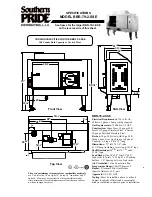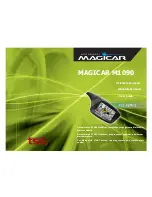
23
Special Compliance Considerations
This Smoke Alarm is suitable for use in apartments, condominiums, townhouses, hospitals, day
care facilities, health care facilities, boarding houses, group homes and dormitories provided a
primary fire detection system already exists to meet fire detection requirements in common areas
like lobbies, hallways, or porches. Using this Smoke Alarm in common areas may not provide
sufficient warning to all residents or meet local fire protection ordinances/regulations.
This Smoke Alarm alone is not a suitable substitute for complete fire detection systems in places housing many
people—like apartment buildings, condominiums, hotels, motels, dormitories, hospitals, health care facilities,
nursing homes, day care facilities, or group homes of any kind. It is not a suitable substitute for complete fire
detection systems in warehouses, industrial facilities, commercial buildings, and special-purpose non-residential
buildings which require special fire detection and alarm systems. Depending on the building codes in your
area, this Smoke Alarm may be used to provide additional protection in these facilities. In new construction,
most building codes require the use of AC or AC/DC powered Smoke Alarms only. In existing construction,
AC, AC/DC, or DC powered Smoke Alarms can be used as specified by local building codes. Refer to NFPA
72 (National Fire Alarm and Signaling Code) and NFPA 101 (Life Safety Code), local building codes, or consult
your Fire Department for detailed fire protection requirements in buildings not defined as “households”.
HUD MAP Program:
Certain HUD battery powered Smoke Alarm applications, especially those that fall under
HUD 223(f) MAP (Multi-family Accelerated Processing), may require a 10 Year sealed tamper resistant battery.
This alarm meets that requirement.
General Limitations for Smoke/CO Alarms
This Smoke/CO Alarm is intended for residential use. It is not intended for use in industrial applications where
Occupational Safety and Health Administration (OSHA) requirements for Carbon Monoxide Alarms must be
met. The Smoke Alarm portion of this device is not intended to alert hearing impaired residents. Special
purpose Smoke Alarms should be installed for hearing impaired residents (CO Alarms are not yet available
for the hearing impaired).
Smoke/CO Alarms may not waken all individuals.
Practice the escape plan at least twice a year, making sure
that everyone is involved – from kids to grandparents. Allow children to master fire escape planning and practice
before holding a fire drill at night when they are sleeping. If children or others do not readily waken to the sound
of the Smoke/CO Alarm, or if there are infants or family members with mobility limitations, make sure that
someone is assigned to assist them in fire drill and in the event of an emergency. It is recommended that you hold
a fire drill while family members are sleeping in order to determine their response to the sound of the Smoke/
CO Alarm while sleeping and to determine whether they may need assistance in the event of an emergency.
















































